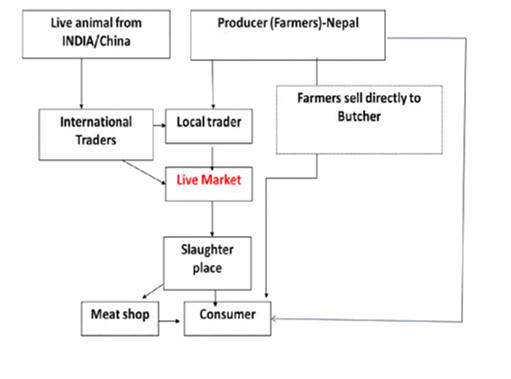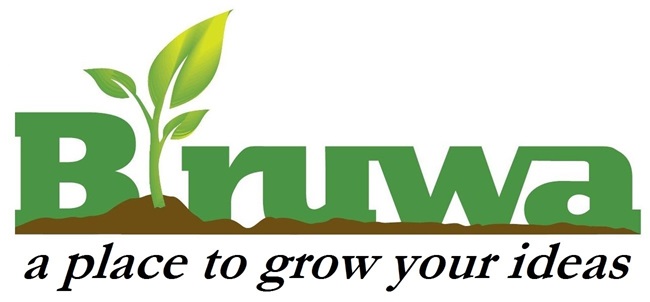Buffalo Meat Industry in Nepal
Today, we rarely find a restaurant in Kathmandu that doesn’t include buff items on the menu. Be it mo: mo, sausages, chowmein, dry meat or any other meat delicacies, the majority of Kathmandu residents choose buff over any other meat. In fact, Kathmandu is the highest buff meat consumption area in Nepal, because of its high popularity in Newari community (the largest ethnic group in Kathmandu). Not just Kathmandu, but other areas of the country have also seen a growing preference for buffalo meat due to its high nutritional value and benefits. As per Ministry of Agriculture Development 2016, 13% of the agricultural contribution in Nepal comes from the livestock sector. Out of which, 6% comes from buffalo meat and milk industry. This has also increased the general interest in buff meat industry among entrepreneurs and other stakeholders in Nepal.
National Scenario:
The indigenous buffalo breeds found in Nepal are Lime, Parkote, and Gaddi that reside in mid hill, river valleys, and high mountains. Besides, there are Murrah buffalo breeds and crossbred buffaloes in the Terai belts of the country. Murrah and Nili-Ravi buffaloes from India have been introduced in Nepal recently.
According to Ministry of Agriculture Development’s Livestock Population Report 2015/16, there are around 5 million buffaloes scattered across the nation.
Table 1 Buffalo Population of Nepal, Source: Ministry of Agriculture Development
| Year | Population of buffalo in Nepal |
| 2012/13 | 5,241, 873 |
| 2013/14 | 5,178, 612 |
| 2014/15 | 5,167, 737 |
| 2015/16 | 5, 168, 809 |
With the increasing number of buffalo population in Nepal, the net production of buffalo meat has also increased over the years. And, per capita buffalo meat consumption in Nepal was around 12.21 kg (as per Our World in Data) in 2013, which is projected to increase in the coming years.
Table 2 Net Production of Buffalo Meat in Nepal, Source: Ministry of Agriculture Development
| Year | Net meat Production/Mt |
| 2012/13 | 175, 132 |
| 2013/14 | 173, 906 |
| 2014/15 | 174, 012 |
| 2015/16 | 175, 005 |
The central region of Nepal is the major importing point of live buffalo from India. The imported buffaloes are mostly transported to Kathmandu and Pokhara. The western region has the second highest demand for buffalo meat in the country due to heavy demands from restaurants and hotels in Pokhara. However, there is no regularly-opened livestock market in Kaski district excluding seasonal market (generally from July-September). Additionally, Belbari, Banke, Bara, and Bardiya are other influential areas for buffalo meat industry in Nepal with major livestock markets and collection centers. Comparatively, the Far-Western region has the lowest priority in livestock marketing and has more market channels to India rather than the domestic market.
Value Chain:
The most popular enterprises on buffalo meat industry in Nepal are buffalo fattening enterprises, fresh and dried meat, frozen meat, meat processing industries and slaughter slab operators or retailers.
The actors involved in the value chain for buffalo meat industry in Nepal are given below:
Figure 1: Value chain of Buffalo Meat Industry in Nepal, Source: RSU-SAARC

Live buffaloes in Nepal are mostly sourced from India/China. Bara is a major transit point for the movement of buffalo between Nepal and India. Kohalpur Livestock Collection Center is considered to be the most important center for transporting buff meat to Kathmandu. Meanwhile, Narayangadh- Mugling-Kathmandu is considered the best route to transport buffaloes to Kathmandu from all ends of Nepal due to the poor road conditions in other routes.
Challenges and constraints:
- Demand-supply gap: Despite the large domestic population of buffaloes and its heavy contribution to nation’s economy, Nepal’s present buffalo population has not been able to meet the high market demands. So, Nepal has been importing a large number of buffaloes from India and China, mainly for the meat supply of Kathmandu.
- Declining genetic resources: Due to improper management practices, the number of pure bred animals in Nepal is decreasing. Now, pure breed population is estimated at only 25 % of the indigenous population of buffaloes in the hills and mountains in Nepal, causing a risk of extinction.
- The scarcity of feed resources: Due to deforestation, and pasture quality degradation, the feed produced in the country hasn’t been able to match up with the high density of livestock. Currently, the high hills have a positive feed balance but mid-hills have an acute deficiency, leading to a low overall productivity of feed for livestock.
- Unmanaged market: Unlike in industrialized countries, the sale price of buffalo in Nepal is not always based on formally weighing the animal. Rather, the animal is often priced as a whole, which doesn’t account for accurate returns. Furthermore, farmers in the rural areas are mostly compelled to sell their buffaloes in an uncompetitive/limited market, often controlled by middlemen who have a monopoly over the prices.
- Poor/ unhygienic slaughtering practices: There still exists unhygienic practices like slaughtering animals in open places, use of dirty water during slaughtering process, and selling meat in open and non-refrigerated places.
- Lack of research and study: Due to the limited research and development efforts regarding buffalo meat industry and its production potentialities in Nepal, there are limited grounds for effective strategic planning to develop this industry.
Prospects and way forward:
- The price of buffalo meat is mostly stable throughout the year as live buffaloes are easily imported from India on a regular basis. The regular and stable production of buffaloes throughout the year opens great prospects for this industry.
- Live livestock marketing should be encouraged by the improvement of existing livestock markets and collection centers. Also, existing markets should be improved from the viewpoint of individual farmers by providing basic necessary facilities in order to encourage them in marketing.
- Efficient strategies like strategic drenching and mineral supplementation should be implemented to reduce the feed deficit, mostly during the winter season.
- Potential ways to diversify buffalo meat as niche products should be explored to maximize the returns.
- Slaughtering practices in slaughterhouses should be improved. For instance, projected slaughterhouses in Kathmandu have planned to equip cold storage to meet the demand from star hotels and restaurants.
Buffalo meat industry of Nepal is still experiencing a market gap due to the demand-supply problem and unmanaged market. This opens new prospects and possibilities for entrepreneurs to fill the gaps by expanding the market or strengthening the already existing market. Also, investment in research and development is quintessential to enrich sustainable productivity growth and efficient strategy planning for this industry in Nepal.
[This article has been prepared with references to Jica Report on ‘The Study on the Agricultural Marketing in Nepal’ and report on ‘Economic Important Traits of Buffalo and their Implication’ by Bijesh Mishra.]



